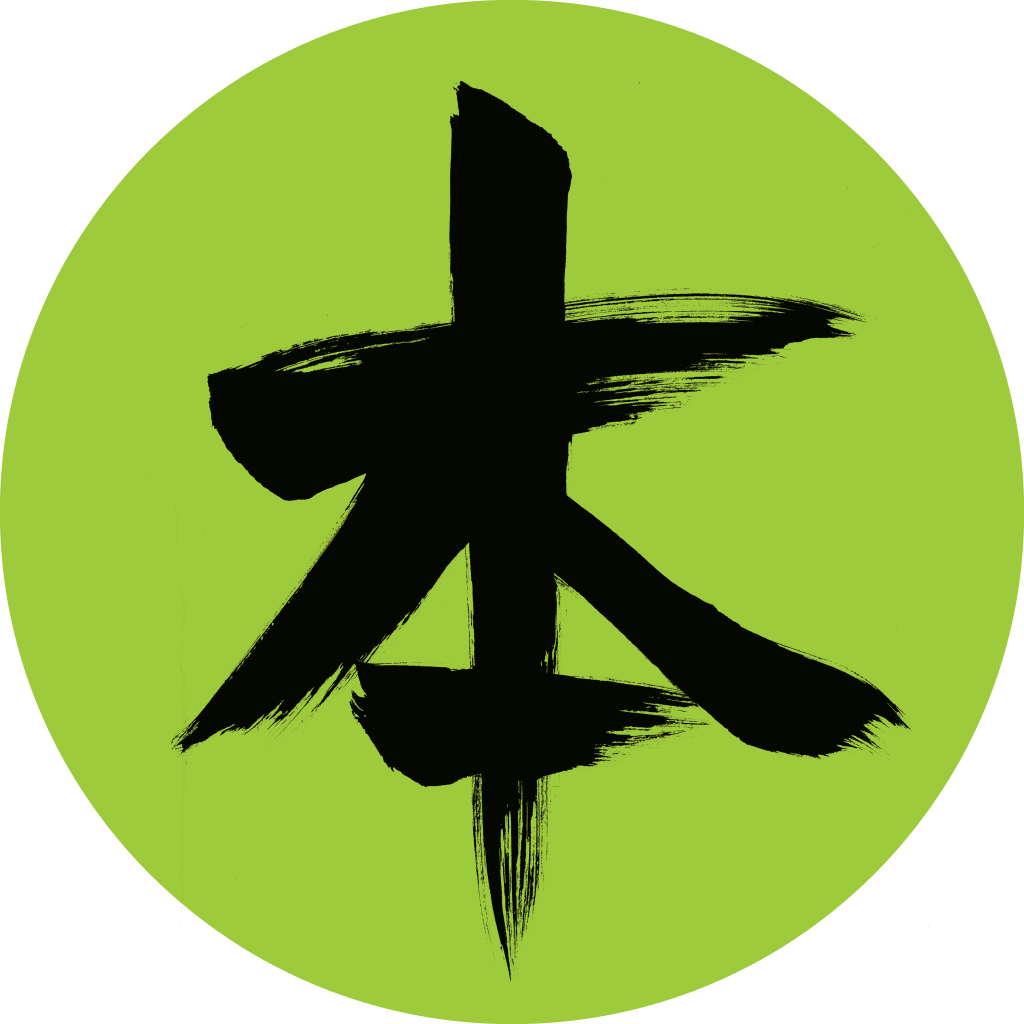
How many cartoons have I seen in which a man climbs a craggy precipice in search of a wise religious figure? Why must sages dispense advice from the highest places? To put it more broadly, why do people think that one has to ascend to find religious purity? It must be related to the idea that God or the gods are in the heavens. Whereas the common person needs food from the earth and rivers, religious figures are sometimes thought to survive on air alone!
I mention this because 詣 means both “to visit a holy place” and “to attain an elevated state.” Could there be a thematic connection? No, not really. Kanjigen does say that the Japanese used to read 詣る as いたる (itaru), translating it as “to arrive at a high place.” (Nowadays that reading is archaic, and 至る (いたる/itaru) is the way to say “to arrive at” or “to reach.”) And quite a few holy places in Japan are indeed way up high. Purifying oneself involves hard work, and some people have ensured that that effort isn’t just spiritual but also physical! However, many shrines and temples are on flat ground.
Meanwhile, the latter definition has to do with attaining a very high stage of study or artistry. The keywords featuring 詣 in that sense involve “deep knowledge,” so in those cases we’re talking about going down, not up!
When I propose a connection between visiting a holy place and attaining an elevated state, I’m mainly doing so as a mnemonic for the two definitions.
A Blurry Boundary
One of my proofreaders told me that, strictly speaking, 詣 is only for visiting shrines, whereas 参 is for visiting temples. She says that when she sees 詣, she imagines a shrine.
However, she notes, many words that should use 詣 instead include 参. One example would be 参道 (さんどう/sandou), the term for the path leading to any shrine or temple. Similarly, a visit to Ise Shrine is known as 伊勢参り (いせまいり/Isemairi), in which 伊 is non-Joyo kanji.
This blurry boundary could be a product of the era in which Japanese temples and shrines were located on the same grounds. That’s before an 1868 law called for the two to be kept separate. The law is known as 神仏判然令 (しんぶつはんぜんれい/Shimbutsuhanzenrei) or 神仏分離令 (しんぶつぶんりれい/Shimbutsubunrirei).
But let’s return to the idea that 詣 is for shrines and that 参 is for temples. Another proofreader consulted various sources and concluded that there is no such official distinction between the two characters. Our star kanji can be about visits to Shinto shrines or Buddhist temples or even a visit to a grave, he said.
I believe him, but I have mentioned the first proofreader’s perceptions because I imagine that other Japanese people also associate 詣 with shrines.
By the way, 詣 applies only to pilgrimages within Japan. When speaking about how Muslim pilgrims go to Mecca, the Japanese instead use 巡礼 (じゅんれい/junrei), as in メッカ巡礼 (Mecca junrei). When referring to the pilgrimages that Buddhists make in countries such as India, Thailand, Cambodia, and so on, the Japanese are again likely to use 巡礼.
The Suffix -詣で
Let’s start our study of 詣 by considering this suffix:
-詣で (-もうで/-moude: visit to a holy place; pilgrimage)
The English word “pilgrimage” doesn’t have to be religious. It could mean “a journey or long search made for exalted or sentimental reasons.” Someone could also use it sarcastically. For instance, I might say that a woman addicted to shoe shopping made a “pilgrimage” to her favorite store.
The Japanese almost always use -詣で in religious contexts, but when they don’t, the usage is similarly sarcastic. For example, one article title called Prime Minister Abe’s first visit to the White House a ホワイトハウス詣で (Howaito Hausu–moude: a “White House pilgrimage”). With that usage the author was critiquing the prime minister for treating President Obama so reverently that it was as if Abe were visiting a shrine or seeing a god.
Similarly, another article title contained 北京詣で to condemn a Japanese politician for being overly warm toward China on a visit to Beijing (北京, read as ペキン/Pekin). Apparently, some English speakers call such people panda huggers! I had never heard that until my proofreader introduced the term.
Aside from sarcastic usage, the Japanese tack -詣で onto the names of religious places, as in this example:
彼は熊野詣でをした。
(Kare wa Kumano-moude o shita).
He made a pilgrimage to Kumano.
彼* (かれ/kare: he); 熊野 (くまの: Kumano)
Kumano Shrines
The name Kumano is short for the area on Honshu known as 熊野地方 (くまのちほう/Kumano chihou: Kumano region). Located on the southern part of the Kii Peninsula, the region includes parts of Mie, Wakayama, and Nara Prefectures. For ancient emperors’ families, that area was the most sacred in the country, and the region became a UNESCO-designated World Heritage Site in 2004.
A “Kumano shrine” is a type of Shinto shrine that enshrines the three Kumano mountains: Hongu, Shingu, and Nachi. In fact, of the three main shrines — Kumano Hongu Taisha, Kumano Hayatama Taisha, and Kumano Nachi Taisha — the first and third are named after the mountains. Hongu, the oldest shrine, is said to have been built in 33 BCE.
In Japan people make pilgrimages to more than 150 temples and shrines. Here are the top 3, according to a Japanese source listing the top 10:
1. Kumano
2. The Shikoku Pilgrimage
3. Ise Shrine
Kumano is first, so it’s most common to associate 詣 with Kumano shrines.
Given their religious importance, this is an established term:
熊野詣で (くまのもうで/Kumano-moude: pilgrimage to the three main Kumano shrines)
Kumano (1st 2 kanji) + pilgrimage
That word lies at the heart of the sentence we just saw:
彼は熊野詣でをした。
He made a pilgrimage to Kumano.
Note that する/suru is the way to make that pilgrimage happen.
The Verb 詣でる
The suffix -詣で comes from this verb:
詣でる (もうでる/mouderu: to make a pilgrimage)
This is the Joyo kun-yomi of our star kanji. That should mean that 詣でる is a common word, but people don’t seem to use this verb often.
I’ll use it in this mnemonic, though: “Someone who makes a pilgrimage is a もうでる (model) citizen.”
The verb 詣でる came from まいず/maizu, a phonetic contraction of まいいず/maiizu (参出ず: to go see someone; visit).
On 詣 Versus 参
If 詣でる evolved from 参出ず, then 詣 and 参 have a relationship. That’s not hard to imagine because those kanji are interchangeable in various contexts. Take for instance this noun-and-verb pair, which introduce a non-Joyo kun-yomi for 詣:
-参り or -詣り (-まいり/-mairi: visit (to a holy place))
参る or 詣る (まいる/mairu: (1) to go; come; call; (2) be defeated; collapse; die; (3) be annoyed; be nonplussed; (4) be madly in love; (5) visit (a holy place))
Actually, the first keyword is primarily a suffix to nouns, though 参り and 詣り can also stand alone. When they do so, people usually add the prefix お-, as in this sentence:
先週末は、七五三のため神社へお詣りに行った。
(Senshuumatsu wa, Shichi-Go-San no tame jinja e o-mairi ni itta).
Last weekend we visited a shrine for the Shichi-Go-San ceremony.
先週末 (せんしゅうまつ/senshuumatsu: last weekend); 七五三 (しちごさん/Shichi-Go-San: name of a ceremony for children of certain ages); 神社* (じんじゃ: Shinto shrine); 行く (いく: to go)
The intransitive verb まいる introduces some complexity into our discussion:
• When it comes to the first definitions (“to go; come; call”) the Japanese render the verb only as 参る.
• For definitions 2 through 4 (“(2) be defeated; collapse; die; (3) be annoyed; be nonplussed; (4) be madly in love”) people use the hiragana まいる.
• We can use our star kanji only with definition 5 (“to visit (a holy place)”), rendering the verb as 詣る. However, even for that last meaning people commonly use 参る.
The Word 参詣
Thus far we have focused only on kun readings of 詣. Let’s shift to the Joyo on-yomi ケイ/kei, which pops up in this word:
参詣 (さんけい/sankei: (1) temple or shrine visit; pilgrimage; (2) visit to a noble person)
visit (to a holy place) + visit (to a holy place)
The latter definition is archaic.
We’ve seen quite a bit about the close relationship between these two kanji, and here they are, bonded together in this term.
Taking 参詣 and adding する/suru forms a verb:
産土神社を参詣しました。
(Ubusunajinja o sankei shimashita).
I visited the shrine of the god of my birthplace.
産土 (うぶすな/ubusuna: birthplace)
The noun 参詣 appears in this book title:
「鉄道が変えた社寺参詣」
(Tetsudou ga kaeta shaji sankei)
How Railroads Have Changed Pilgrimages to Shrines and Temples
鉄道* (てつどう/tetsudou: railroad); 変える (かえる/kaeru: to change);
社寺 (しゃじ/shaji: shrines and temples)
「初詣は鉄道とともに生まれ育った」
(Hatsumoude wa tetsudou totomoni umare sodatta)
Being Born and Growing Up with Trains as a Way to Make the First Shrine Visit of the Year
とともに/totomoni (together with); 生まれ育つ (うまれそだつ/umaresodatsu: to be born and to grow up)
Hey, the subtitle includes our star kanji in another term:
初詣で or 初詣 (はつもうで/hatsumoude: first visit of the new year to a holy place)
1st + visit to a holy place
The word 参詣 lies inside these spin-offs:
参詣者 (さんけいしゃ/sankeisha: visitor to a temple or shrine; pilgrim; worshiper)
visit (to a holy place) + visit (to a holy place) + person
参詣人 (さんけいにん/sankeinin: visitor to a temple or shrine; pilgrim; worshiper)
visit (to a holy place) + visit (to a holy place) + person
These words are completely synonymous. Apparently, 参詣者 is more common.
Remember our discussion of the Kumano shrines? Well, 参詣 lies inside a word closely related to them:
熊野参詣道 (くまのさんけいみち/Kumano sankei michi: pilgrimage route to the three main Kumano shrines)
Kumano (1st 2 kanji) + pilgrimage (next 2 kanji) + route
To refer to the pilgrimage itself, simply chop off the last kanji:
熊野参詣 (くまのさんけい/Kumano sankei: pilgrimage to the three main Kumano shrines)
Kumano (1st 2 kanji) + pilgrimage (last 2 kanji)
This term is less common than a synonym we already saw:
熊野詣で (くまのもうで/Kumano-moude: pilgrimage to the three main Kumano shrines)
Kumano (1st 2 kanji) + pilgrimage
****
We hope you enjoyed learning about 詣. But there’s more! This article has a more in-depth version, available by PDF for US $1.99 from the Joy o’ Kanji website.
About the Author: Eve Kushner is author of Crazy for Kanji: A Student’s Guide to the Wonderful World of Japanese Characters. She also runs the Joy o’ Kanji website.
